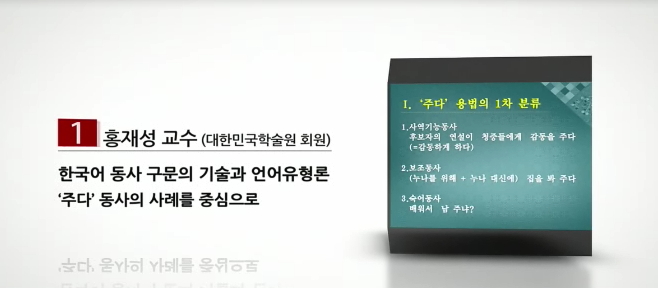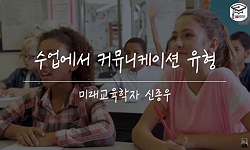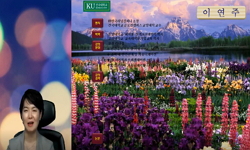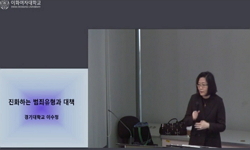본 연구에서는 朝鮮時代의 流刑制度를 종합적으로 고찰한것이다. 流刑은 朝鮮時代의 正刑의 하나로 지방에서 보다는 중앙에서 왕명에 의해 주로 政治犯에게 많이 적용되었던 형벌이므로, ...
http://chineseinput.net/에서 pinyin(병음)방식으로 중국어를 변환할 수 있습니다.
변환된 중국어를 복사하여 사용하시면 됩니다.
- 中文 을 입력하시려면 zhongwen을 입력하시고 space를누르시면됩니다.
- 北京 을 입력하시려면 beijing을 입력하시고 space를 누르시면 됩니다.
https://www.riss.kr/link?id=T908589
- 저자
-
발행사항
서울 : 이화여자대학교, 1991
-
학위논문사항
학위논문(석사) : -- 이화여자대학교 대학원 - , 사회생활학 , 1991
-
발행연도
1991
-
작성언어
한국어
- 주제어
-
DDC
390.9519 판사항(20)
-
형태사항
70 p. ; 26 cm.
- 소장기관
-
0
상세조회 -
0
다운로드
부가정보
국문 초록 (Abstract)
본 연구에서는 朝鮮時代의 流刑制度를 종합적으로 고찰한것이다. 流刑은 朝鮮時代의 正刑의 하나로 지방에서 보다는 중앙에서 왕명에 의해 주로 政治犯에게 많이 적용되었던 형벌이므로, 그때 그때의 정치상황이나 죄인의 신분차 혹은 죄상의 輕重에 따라 결정되었고, 이에 따라 유배 생활의 모습도 다르게 나타났다. 따라서 본 연구에서는 流刑의 그 당시의 실례를 연구함에 중점을 두고, 실지로 유형에 처해지면 어떻게 생활하였는가를 이해하는데 중점을 두었다. 연구의 방법은 유형의 실례를 조사하기 위해서 조선 전기는 주로 《朝鮮王朝實錄》에서, 조선 후기는 《燃黎室記述》에서 그 사례를 모았으며 실제 유배지에서의 모습은 개인의 문집글과 그들의 유배지에서의 글을 통해 추정해 보았다.
朝鮮의 流刑制度는 《經國大典》이 편찬되기 이전에는 《大明律》에 의거하였고 《經國大典》이 편찬된 이후에는 《經國大典》에 의거하였는데 그 근본 개념은 크게 변화가 있었던 것은 아니다. 流刑의 개념은 사람이 重한 죄를 범했을 때 차마 死刑까지는 하지 못하고 먼 곳으로 귀양보내어 죽을 때까지 고향에 돌아오지 못하게 하는 형벌로서, 그 等級도 500리를 기준으로 2천리에서 3천리까지 3등급으로 나누어져 있었다.
국토가 좁은 우리 나라에서는 지리적 제약이 있어 流刑의 3등급의 적용이 불합리했으므로 《大明律直解》나 《世宗實錄》의 世宗 12년 5월의 兵曹의 啓에서는, 우리의 실정에 맞게 거주 지역을 표준으로 하여 어디서 어디로 귀양 보낸다는 地名 중심의 流配 결정을 내리고 있음을 살펴 볼 수 있었다.
流配地로는 遠地나 無人島 有人島등이 정해졌고, 당시의 流刑은, 기한이 정해져 있었던 것이 아니었기 때문에 종신형이나 다름이 없었으며, 다만 정세 변화에 따라 放免되거나, 사면 후 再官의 길이 열려 다시 中央政界에 진출하는 경우도 있었고 혹은 賜死되거나 他地로 移配되는 경우가 있음을 살펴 보았다. 또한 流刑의 집행 방법으로 安置.充軍 付處.遷徙.爲奴둥의 방법이 있음을 알 수 있었다.
流刑因들의 실제 생활을 통해서 流刑은 그 신분도 왕족이나 정치인, 학자로부터 일반 평민, 노비에까지 적용된 것으로 그 당시의 지식인 계급인 양반계층은 주로 謫所에 지방민 子弟들을 불러 모으거나 私□을 마련하여 학문과 지식을 전달하는등 학문향상이나 문화 발전에도 크게 이바지 하였고, 유배로 인하여 개인의 저술 활동이나 유배지의 사정을 잘 파악 할 수 있게 하였다.
다국어 초록 (Multilingual Abstract)
The purpose of this study is to look into the banishment (流刑) system in the Chosun Dynasty(朝鮮王朝) synthetically. The banishment being one of the punishmerlt system executed in the Joseon Dynasty, it was usually applied by king's order to p...
The purpose of this study is to look into the banishment (流刑) system in the Chosun Dynasty(朝鮮王朝) synthetically.
The banishment being one of the punishmerlt system executed in the Joseon Dynasty, it was usually applied by king's order to political offenders and thus determinded in terms of then political situations, the social class of offenders, or the relative weight of their crimes so that their lives in the places of exile appears differently among them.
In the study, the actual cases of then banishment are emphatically studied to understand mainly how the exiles lived when they were sentencd to banishment.
To study the cases of banishment, the Chosun-Dynasty-an Authentic Record(朝鮮王朝實錄) of the former period and the Yunryeoshil-Description(練藜室記述) of the latter period of the Chosun Dynasty are used to collect such cases. And the lives in the exile are presumed from the literatures by exiles themselves. The banishment system of the Joseon Dynasty was thought to be applied mainly to the political offenders in accordance with <Tae-Myeong-Law) (大明律) which assumes that 'if a man commits a serious crime and it is supposed too much for him to be setenced to
death for his crime, he should be forced to leave his hometown and not to return forever. In accordance with the (code of laws, the distance basis of the punishment is classified into three grades: 500ri(里), 2,000 ri(里), and 3.000 ri(里).
Since this classification of punishlment distance grade is unreasonable to execute due to the geograLphica1 condition of the peninsular, (Tae-Myeong-Law jikhae) ( 大明律 直解 ) or the guidelines of Byungjo ( 兵曹 ), today's Ministry of National Defense, modificated it more practically and said that the distance should be
determined in relatidn with the exile's residential quarter. So, seemingly, he or she was sentenced to be banished from where to where.
The cases for the banishment reveal the fact that the places of exile were more often than not places at a great distance, or an uninhabited or inhabited island and that the term of exile was just the life sentence. In very few case, however. the exile was pardoned in the context of political changes and then even allowed to reenter upon office. Or sometimes they were bestowed poison to death or moved again to another exile.
For the execution methods of the banishment, An-Chi (安置)- confining in one's place exile, Chung-Gun (充軍)- steady service, Pu-Cheo (付處) Chun-Sa (遷徙) - banishment, and Wi-No (爲奴) - slavery are discovered from the literatures concerned.
The practical lives which exiles lived suggest that the banishment were executed to all classes ranging from the royal family, politicians, and scholars to ordinary citizens and male and female. It was also discoved, however, that then those belonging to the aristocratic class and of local illustrious families could call their sons into the places of their exile or prepare their private schools for their sons so that they cound hand down their learning and knowledge to them, contributing much to the development of learning and culture in those times.
목차 (Table of Contents)
- 목차 = ⅰ
- 論文 槪要 = ⅲ
- Ⅰ. 序論 = 1
- Ⅱ. 流刑의 槪念과 種類 = 3
- 1. 流刑의 槪念 = 3
- 목차 = ⅰ
- 論文 槪要 = ⅲ
- Ⅰ. 序論 = 1
- Ⅱ. 流刑의 槪念과 種類 = 3
- 1. 流刑의 槪念 = 3
- 2. 流刑의 種類 = 5
- Ⅲ. 流刑의 執行 = 16
- 1. 流刑의 執行節次 = 17
- 2. 流刑의 癲用 = 27
- 3. 流配地 = 33
- Ⅳ. 流配地 生活과 活動 = 43
- 1. 流配生活의 모습 = 43
- 2. 流配地에서의 活動 = 53
- Ⅴ. 結論 = 63
- 參考文獻 = 65
- ABSTRACT = 68












